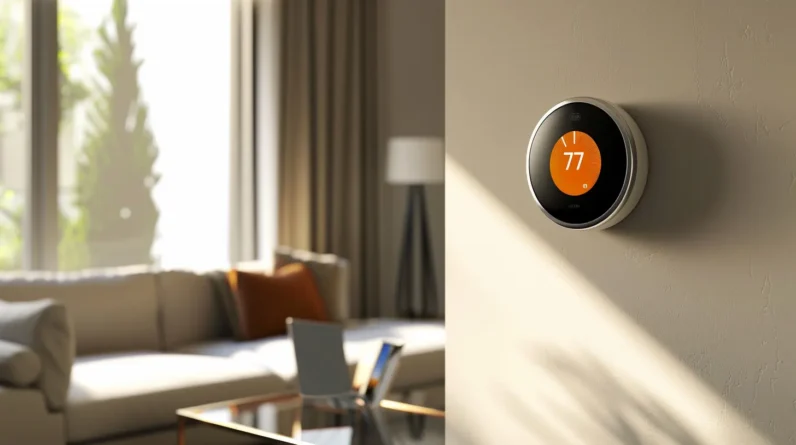
Firmware updates form the critical backbone of our smart home ecosystems, serving multiple essential functions we can’t ignore. We’re protecting our devices against evolving security threats through regular updates while simultaneously enhancing their performance capabilities. When we implement timely firmware updates, we’re optimizing device response times, improving hub-device communications, and ensuring cross-platform compatibility. Following proper update protocols helps us maintain stable configurations and prevent corruption during installation processes. Through systematic update management and security best practices, we’ll discover how to maximize our smart home systems’ potential while safeguarding against vulnerabilities.
Understanding Smart Home Firmware
While smart home devices may appear simple on the surface, they rely on firmware – specialized software that’s embedded directly into the device’s hardware components. This firmware serves as the bridge between the physical hardware and the device’s operational capabilities, controlling everything from basic functionality to advanced features.
We’ll find that smart home firmware typically consists of three key components: bootloader code that initializes the device, the main operational code that runs device functions, and memory segments that store device-specific settings. These elements work together to manage communication protocols, security implementations, and device-specific operations. When we examine modern smart home systems, we’ll notice they often utilize standardized protocols like Zigbee, Z-Wave, or Matter, which require precise firmware configurations to maintain interoperability and peak performance across the network.
Security Risks and Vulnerabilities
Despite regular security updates, smart home firmware remains vulnerable to various cybersecurity threats that can compromise device integrity and network safety. We must understand that outdated firmware creates security gaps that malicious actors can exploit to gain unauthorized access to our smart home ecosystems.
Primary security vulnerabilities we need to monitor include:
– Buffer overflow attacks targeting memory allocation in IoT devices, potentially leading to code execution
– Man-in-the-middle exploits intercepting communication between devices and cloud servers
– Hard-coded credentials that remain unchanged after factory resets, enabling backdoor access
– Unencrypted data transmission protocols exposing sensitive information
To mitigate these risks, we’ll need to implement robust update protocols, enforce encryption standards, and maintain consistent patch management schedules. Regular security audits and vulnerability assessments should become standard practice in our smart home maintenance routines.
Performance Benefits of Updates
Firmware updates deliver substantial performance enhancements that extend beyond security patches to optimize device functionality and system efficiency. We’ve observed that regular updates often improve device response times, reduce latency in command execution, and enhance overall system stability.
When we install these updates, we’re implementing optimized algorithms that streamline data processing and memory utilization. The updates frequently incorporate enhanced protocols for device-to-hub communication, resulting in more efficient bandwidth usage and reduced power consumption. We’ll typically see improvements in boot times, smoother automated routines, and better integration with third-party platforms.
These performance upgrades also address compatibility issues, ensuring our smart home devices maintain seamless interactions across the ecosystem. By implementing firmware updates, we’re maximizing our devices’ operational capabilities while extending their practical lifespan through improved resource management.
Essential Update Management Steps
Following a strategic approach guarantees the successful deployment of these performance-enhancing updates across smart home systems. We must implement a structured protocol that prioritizes system stability and data integrity throughout the update process.
– Back up all device configurations and automation settings before initiating any firmware updates
– Verify network stability and maintain consistent power supply to prevent corruption during installation
– Execute updates sequentially, starting with the hub or primary controller before updating peripheral devices
– Document all changes and maintain a version control log for troubleshooting purposes
We’ll need to monitor system performance post-update and verify that all integrations remain functional. When managing multiple devices, it’s essential to maintain a regular update schedule and establish a rollback protocol for addressing potential compatibility issues. This systematic approach guarantees our smart home ecosystem remains secure and optimized.
Common Firmware Update Challenges
Smart home update procedures can encounter several critical obstacles that require systematic resolution approaches. We’re often confronted with connectivity interruptions during firmware transmission, which can corrupt update packages and compromise device functionality. Incompatibility issues between firmware versions and hardware models frequently emerge, particularly in multi-vendor ecosystems.
We must address power stability concerns, as unexpected outages during updates can brick devices. Storage limitations on IoT devices can prevent proper update installation, while bandwidth constraints may impede simultaneous updates across multiple devices. Authentication failures and compromised update signatures present significant security risks that we need to validate meticulously. Additionally, we’ll encounter update timeouts due to network latency, requiring robust retry mechanisms and fallback protocols to maintain system integrity and prevent device malfunction.
Conclusion
We’ve explored how firmware updates serve as the digital lifeblood of our smart home ecosystems, pulsing through each connected device to fortify our technological ramparts. By implementing rigorous update protocols and maintaining precise version control across our IoT network, we’re not just patching vulnerabilities—we’re orchestrating a robust defense matrix. Let’s maintain this critical infrastructure through systematic firmware management, ensuring our smart homes remain secure and optimized.







